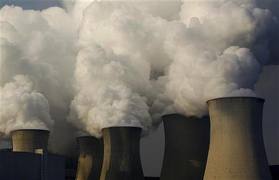It’s been all over the papers the past few days. The Florida Public Service Commission recently approved cost recovery figures for a number of planned and existing nuclear plants managed by FPL and Progress Energy Florida. The Sunshine State Ignores Solar.
In other words, these two can begin charging us more for the electricity they create from nuclear sources.
Such an announcement would have been bad in isolation. But when you consider that Florida’s legislature also revised our renewable portfolio standards specifically to include nuclear power, there’s clearly a concerted effort by state officials to nurture a technology whose time has long past.
I’m not opposed to state or federal governments making long-term decisions about our energy future. In fact, I’ve often written about how our elected officials don’t go far enough. As a solar PV installation instructor, I’m constantly amazed that Florida’s green incentives lag far behind New Jersey, Ontario, Japan, and countless other regions that don’t enjoy the solar potential of the Sunshine State.
Worse still, Florida’s government maintains policies that actually disincentivize homeowners.
The Government Should Act – But It Should Act Responsibly
Although I’m all for greater government involvement, I’m deeply disappointed that this involvement grants so much priority to nuclear energy.
After all, there’s a reason why France, one of the largest markets for nuclear power, decided against building more reactors – a decision made long before the Fukushima Daiichi disaster of 2011.
I could go on and on about the safety risks of nuclear energy. For me, these are sufficient reasons to abandon the technology altogether. But obviously, not everyone feels that way, which is why our state continues to invest in more reactors.
So here are some additional reasons:
1. Nuclear Energy is Expensive
The actual energy generation is cheap (and thus its biggest selling point), but building new plants costs billions in taxpayer money. Arguably bigger still are the disposal expenses – a financial commitment that never really goes away.
2. Nuclear Energy is not Environmentally Friendly
Nuclear power should never be included in any legitimate renewable portfolio standard. Disposal is an obvious ecological hazard, but there’s also the actual construction itself. New nuclear plants require a tremendous amount of land, thus, destroying one of Florida’s greatest assets – delicate ecosystems that took millions of years to evolve. That FPL built its Turkey Point nuclear power plant on South Dade County’s coral reef is a perfect example of this general disregard for our state’s unbelievable natural beauty.
3. Nuclear Energy Destroys Property Values
Would you voluntarily move into a neighborhood next to a reactor? Know anyone who would?
If you’re like most people, you have the luxury of deciding. Unfortunately, many homeowners in Florida woke up one morning to discover their community would soon play host to a new reactor.
At a time when our country is desperately trying to bring housing prices back up, nuclear investments take us in the wrong direction. This is especially true in sunny Florida – one of the hardest hit markets during the housing bubble.
4. Nuclear Energy Isn’t Reliable
Before Hurricane Sandy reached New Jersey, the state wisely shut down its nuclear plants. With normal utility power, you keep the generators running until the storm knocks them out.
But with nuclear energy, even a minor breakdown can have disastrous consequences in a region largely unaccustomed to super storms of that magnitude.
For New Jersey, this was a once in a generation event. But in Florida, we have an entire season dedicated to super storms. Why develop energy sources that must voluntarily be shut down every time a hurricane comes along?
By contrast – when doing damage assessment after Hurricane Sandy, the regulatory agency that oversees New Jersey’s power distribution indicated it had received zero reports of solar power malfunctions in the region.
Not only do you not have to shut solar down, but even after the storm has passed, you still have electricity.
One Nuclear Reactor Per Solar System Should Be Enough
Why do we continue to invest taxpayer dollars in a dangerous technology that mimics what our solar system’s largest nuclear reactor already provides for free?
Let the sun handle the logistics of managing, burning, and disposing of radioactive material while we merely collect the benefits using safe technologies that don’t harm our ecosystems and communities.

